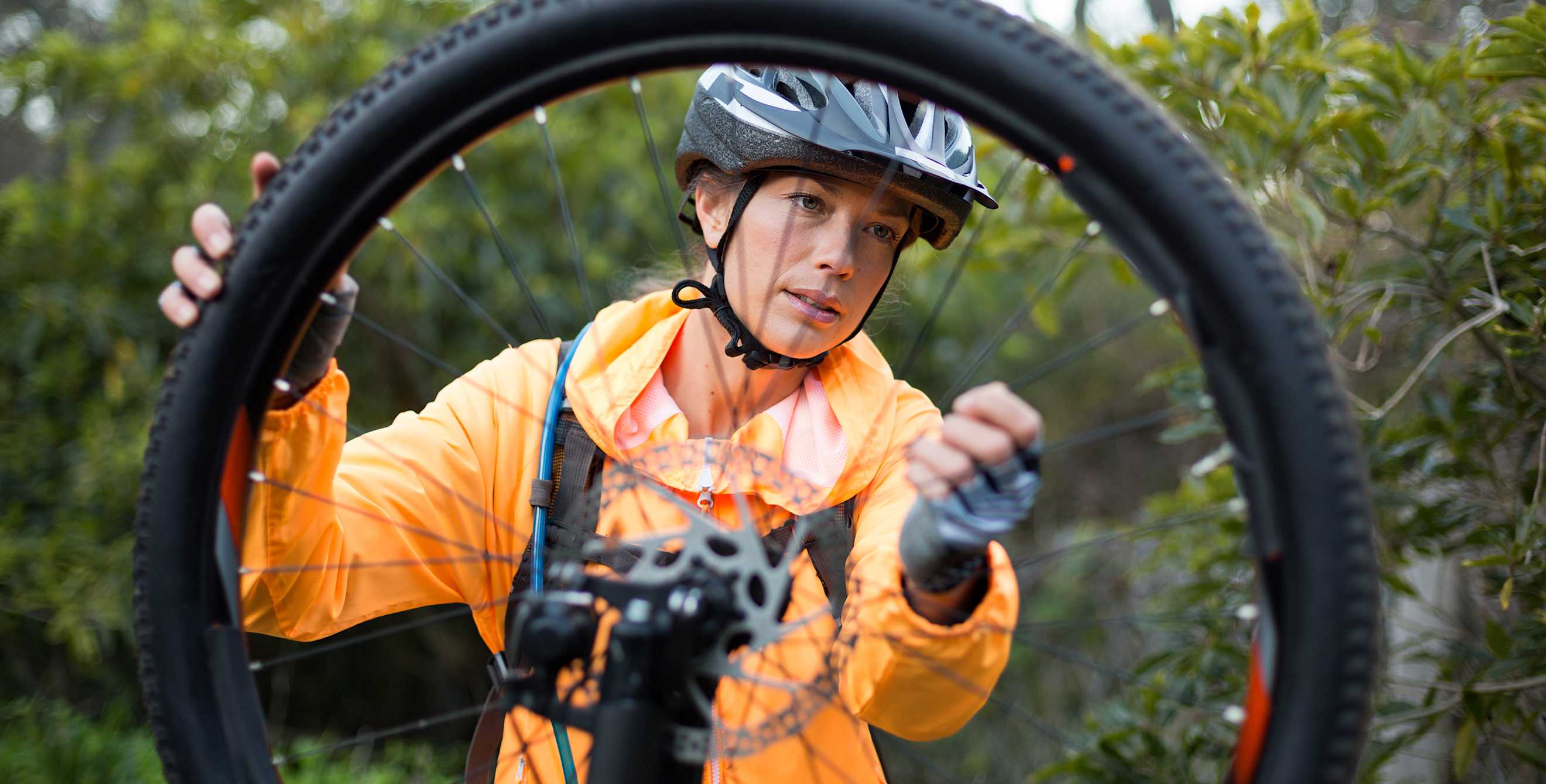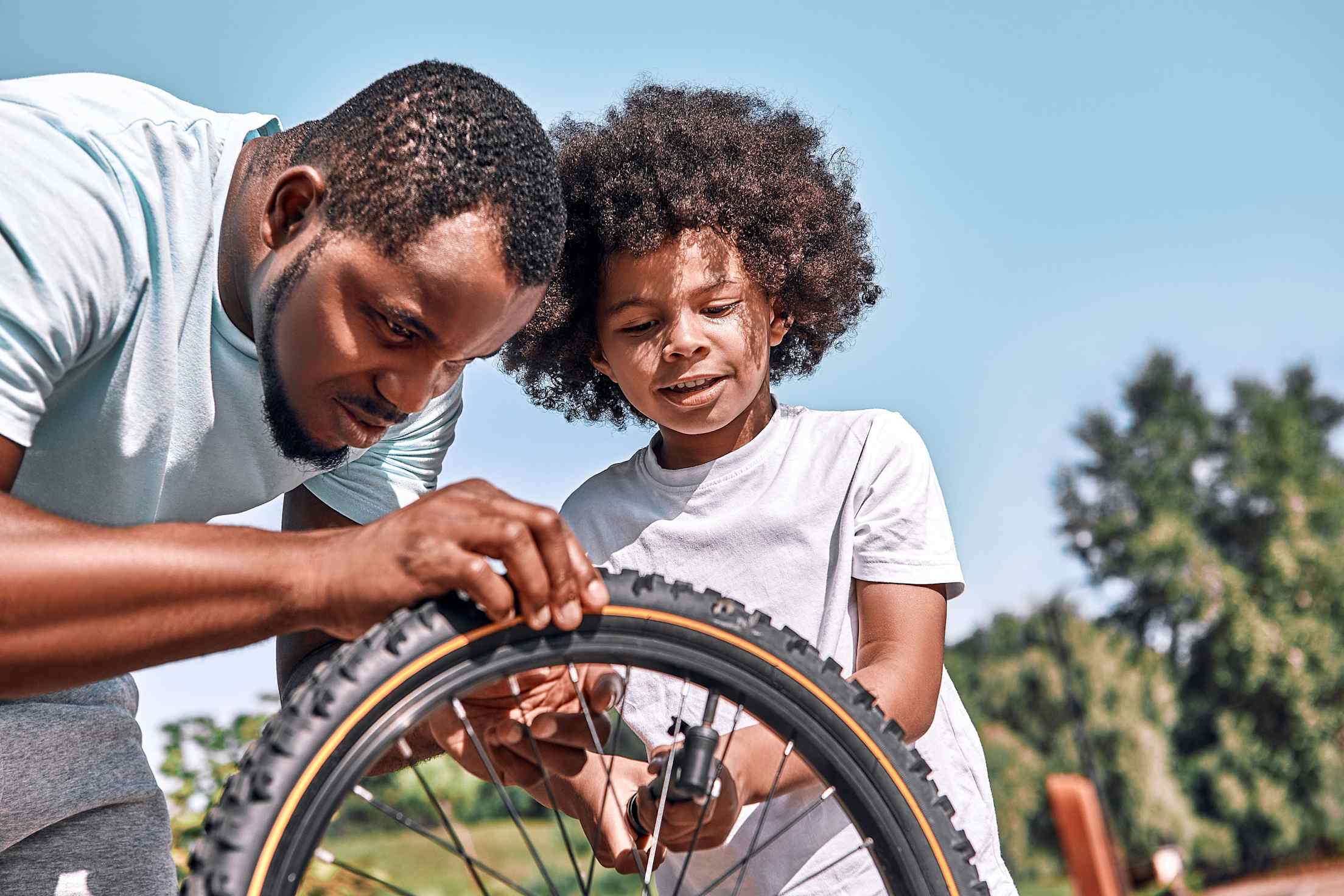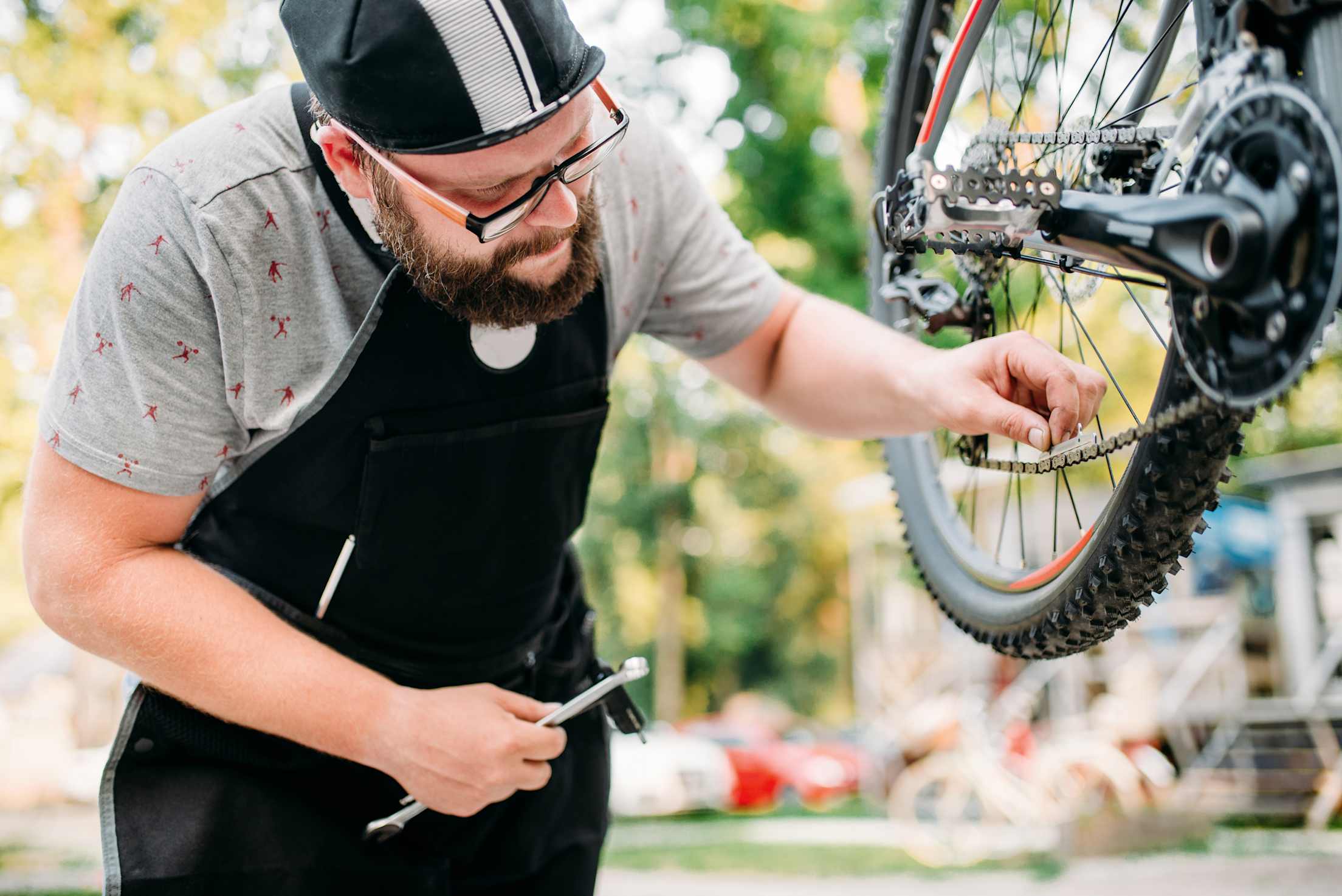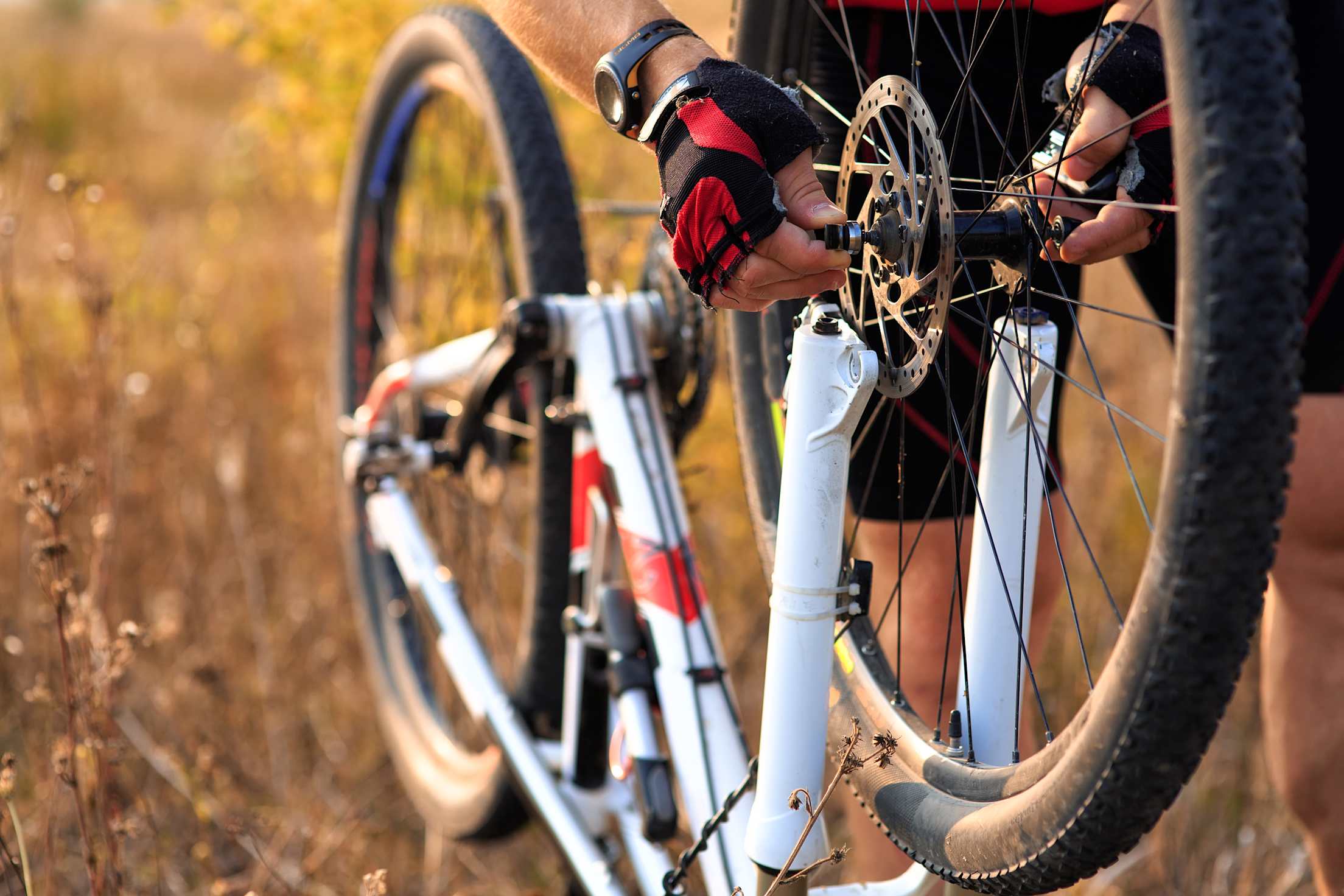
How to Do Basic Bike Maintenance
These DIY preventive measures keep your bike in working order so you’ll stay safe on the roads and trails.

With the breeze on your face and the sounds of the neighborhood as your soundtrack, there’s something about riding a bike that unlocks a new level of freedom and adventure. Sooner or later, though, your bike is going to need a tune-up to keep it running smoothly—and to help you avoid any trouble on the go.
Whether you prefer pedaling on trails or roads, on a hand-me-down or a brand-new steed, it’s a smart idea to brush up on a few bike maintenance basics so you can address—or prevent— mechanical issues that could arise. Most fixes are pretty straightforward. These 10 steps will help ensure that your bike is in tip-top shape.
1. Get to know your bike.
Bikes vary from model to model, each featuring unique components and parts. A mountain bike has different pieces from the ones on a road bike, gravel bike, electric bike, kids’ bike, and so on. In the same way you get to know your car and its features over time, your bike becomes more familiar the more you ride it. If you know how it feels, looks, and sounds when it’s in good working order, you’ll be better able to detect when it needs attention.
“Typically, the indication that your bike needs to be looked at is when it’s making a funny noise,” says Marley Blonsky, a bike adventurer formerly based in Seattle. “I’ve had far too many friends ignore a sound and then have it turn into a much costlier repair.”
There are a few specifications you should know about your bike before you start your inspection:
- tire and tube size
- tire PSI (how much air it needs)
- type of braking system
- intended use
- frame geometry and materials
These details, which you can find in the manual or online, will help you tend to your bike’s unique needs.

2. Gather a tool kit.
Once you know more about your bike’s features, you can collect the appropriate tools for basic fixes. Joe Riemensnider, owner of Spotted Dog Cycles in Missoula, Montana, recommends all bike enthusiasts have number 4mm, 5mm, and 6mm Allen wrenches for bolts; a Phillips screwdriver for shifting; needle-nose pliers; and a pump with an accurate pressure gauge. “Even as professional mechanics, those are the main tools we use,” he says.
Other handy items include a tire patch kit, tire lever, lubricant, degreaser, portable multitool, and clean rags. Some nonessential tools that might make maintenance easier for ambitious riders, Riemensnider adds, include a crescent wrench to tighten a loose seat; a 13mm, 15mm, or 17mm box wrench for adjusting wheels; and a bike stand. If you don’t have a stand, you can easily prop your bike upside down on its handlebars and seat, placing it on a tarp or a towel.
Smart Tip: Keep a seat pack strapped to your bike, stocked with on-the-road emergency supplies such as an Allen wrench set, a spare tube, a small pump or CO2 cartridge, and a patch kit.
3. Keep your bike clean.
To keep your bike cruising, it’s important to clean off dust, debris, grease, and any other buildup. “The dirt can get past the seals and accelerate the wear of pieces,” says Kelly Ernest, a mountain biker and hobbyist mechanic in Ely, Nevada. He adds that a clean bike is also easier to inspect for cracks, damage, and other wear.
For a quick clean, Ernest mixes a dab of laundry detergent with warm water in a washtub to create suds, and then uses a washcloth to wipe down his bike’s frame and components. When it’s extra dirty after a ride, or if there’s time for a more thorough wash, he’ll use the hose on a lower pressure. “I turn the host on a quarter or half the way and let the water fall onto the bike,” he says. “If the water pressure is too high, bearings and seals can be damaged, so make sure not to spray the bike too hard.”
To clean your chain, use a bike-specific degreaser to get rid of any accumulated gunk. Avoid kerosene or turpentine, which are too aggressive and can be harmful to your skin and the environment. Some solvents are more eco-friendly, but with every product, always dispose of the excess properly and as advised.

4. Check your tires.
Before every ride, Blonsky recommends running down the ABC Quick Check, a basic list for inspection: Air, Brakes, and Chain.
Start by checking your tire pressure, or PSI, by using a pump with a pressure gauge. If you squeeze your tires with your hand, they should feel firm. But if the tire feels squishy, use your pump and gauge to fill up the tubes to the recommended PSI, which can typically be found written on the sidewall of each tire. These numbers are usually a wide range, such as 40 to 90, and the sweet spot depends on what type of riding you’re doing. As a rule of thumb, softer is better for off-road and harder for on-road, but check with your specific manufacturer’s instructions.
To fill, loosen the plastic or metal nut at the tip of each tire’s valve, which is either a Shrader or Presta valve—most bike pumps are compatible with both. Attach the pump, then inflate by pumping with your hands or feet to the desired level. Don’t forget to put the valve cap back on once you’re finished.
“Keeping your tires in good shape and where they’re supposed to be pressure-wise is a good way to keep your tubes in good shape as well,” Riemensnider says.
Even if there isn’t a hole, the porous rubber of both tube and tire allows air to leak over time. Inspect both the tires and the inner tubes for cracks, punctures, or tears, which can be usually remedied with a patch kit or by replacing the tube. While checking the tire pressure, you should also make sure your wheels are aligned and not crooked. You can do this by opening your quick release skewer and letting the weight of the bike sit on the wheels’ skewer while loose. This should help get the wheel in position before tightening the skewer.
Smart Tip: Run into trouble on a ride? Your AAA Membership includes towing for your bike in case you find yourself with an unfixable flat tire or broken chain.

5. Check your brakes.
When you squeeze your brake levers, you should feel some tension when the brake pads make contact with the rim or disc, depending on the type of brakes you have. “If there’s no resistance and you can pull your lever all the way back to the bar, it’s likely your brakes need to be tightened,” Blonsky says. “Another good indicator is [that] you’re not slowing down as much as you want to.”
The four most common types of bike brakes are rim, disc, coaster, and drum brakes. Each kind requires different maintenance, and while most are easy to fix at home, it’s best to seek professional help if you’re unsure of how to adjust them. If you’re willing to spend the time and patience learning, Riemensnider recommends watching tutorials on YouTube as the step before the bike shop.
Bicycle brake pads, like any vehicle’s brake pads, are consumable parts. You’ll need new ones at some point during your riding. Even if you’re not comfortable making the switch yourself, get them replaced when the pads are worn down past the vertical wear-indicator grooves and less than one-eighth of an inch thick.

6. Check your chain.
The chain is the mechanism that propels you forward by transferring your pedal power to the drive-wheel. Some people will tell you to replace your chain every 1,000 to 2,000 miles, but it’s best to examine it often because an old or worn chain can lead to other damage on your bike.
Before your chain gets rusty or breaks, it will likely stretch out. You can use a bike-chain wear-indicator tool or just tug on the chain when it’s on the largest chainring (the spiky disc by your pedals). If you can pull it off the chainring, it might need to be replaced.
Slow the rate of wear by applying lubricant frequently. After you degrease the chain, chainrings, and cassette (the metal discs your chain moves on), apply chain lube directly to each link and wipe off excess with a rag.
“I try to lube it about every three to four rides,” says Ernest, who logs around 10 miles a day on his bike. “Oftentimes, I can hear when my chain will get a little extra crunchy or noisy. That’s when you know it definitely needs some oil on it.”
Another way to check the health of your chain is to make sure it transitions between gears without getting stuck. Prop up the bike, shift through all the gears, and watch your chain drop into the proper cassette cogs and chainrings. If it skips gears, seek an expert’s help.

7. Tighten up loose bolts.
Hearing rattling when you ride? It could be as simple as a loose bolt. Use a wrench to check each bolt and tighten as needed. Inspect the bolts on the handlebars, stem, seat, suspension pivot points, racks, wheels, and elsewhere. However, don’t overtighten. Some bolts have torque ratings you’re not supposed to exceed, which you can usually find in your bike’s manual, says Ernest. “Just make sure they’re all nice and tight and not loosening out,” he advises.
8. Take it for a test ride.
After making your adjustments, hop on your bike for a short test ride down the street or in your driveway. Has the funny noise stopped? Do your brakes work? Does the chain transition smoothly between the gears? Are your seat and handlebars sturdily in place? Go through the motions on your bike to review each component. If everything feels the way it’s supposed to, you’re ready to go.

9. Take a class.
When it comes to some of the more complicated fixes, consider taking a class online or in person. Nonprofits or community groups in your area likely offer workshops at an affordable price. There, you can expand your knowledge on the more complex bike parts such as cranks, cassettes, drivetrains, derailleurs, hubs, headsets, and cables. Many involve hands-on sessions with experienced bike mechanics. Check out Bike Kitchen in San Francisco, Reno Bike Project in Nevada, and Bike East Bay in Northern California.
10. Call your mechanic.
When in doubt, take your bike to the shop. Sometimes these basic bike maintenance tricks won’t solve the issue, so it’s best to have an expert diagnose what’s going on.
“It’s a lot easier for us to see the bike and know what’s going on then, but we’re often pretty good at giving you a tip over the phone,” says Riemensnider.
Depending on how much you ride, it’s best to bring your bike in for a comprehensive servicing either once a season or once a year. This can include examining suspension, bleeding brakes, replacing worn bearings, and fixing wheels. The cost of a tune-up will vary from shop to shop, sometimes as much as $200, so call around to your local shops for prices. A professional tune-up is a worthwhile investment for your safety and the bike’s longevity.
Need a bike tow? AAA provides disabled bicycle transportation service to all Membership levels.